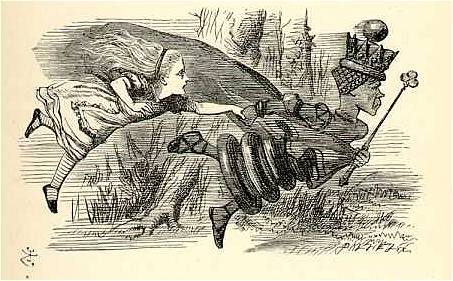“Now, here, you see, it takes all the running you can do, to keep in the same place.”
Enthusiastic science communicators often claim that an animal is “perfectly adapted” to its environment. However, in a constantly changing world, where every individual is striving towards its own selfish cause, achieving perfection is impossible. Studying the concepts behind trade-offs, and the Red Queen hypothesis, can shed some light on why nobody is perfect.
Resources in an environment can be scarce, or hard to obtain, forcing animals to compromise. For example, should the energy gained from a meal be deposited as fat to keep warm, or used to grow some fur? Dry fur is a better insulator than fat, but wet fur becomes heavy. Fat is heavy and bulky, which may hamper movement. Moreover, energy spent growing fur or fat is not being invested in offspring; is it more important for an organism to have healthier young, or to survive for longer and produce more young?
Developing a perfect adaptation is made more difficult by the constantly changing environment. Brilliant adaptations may become useless when the season changes, a new predator is introduced, or prey develops defences. Because of environmental dynamics, animals have to keep evolving to maintain their position in the ecosystem. This phenomenon is known as the Red Queen hypothesis, after a quote from Through the Looking-Glass (see the top of this article). When one species must constantly adapt in response to another species’ adaptations, an evolutionary arms race can arise. For example, insects predated by bats have developed hearing capable of detecting bat sonar. To counteract this, some bats use a different type of sonar as they approach prey, broadening the field of detection 1.
Although many animals seem in perfect harmony with their environment, perfection is impossible in nature. Perhaps the closest an animal can get to perfect adaptation is to adapt quickly. As Winston Churchill said, “To improve is to change; to be perfect is to change often”.

